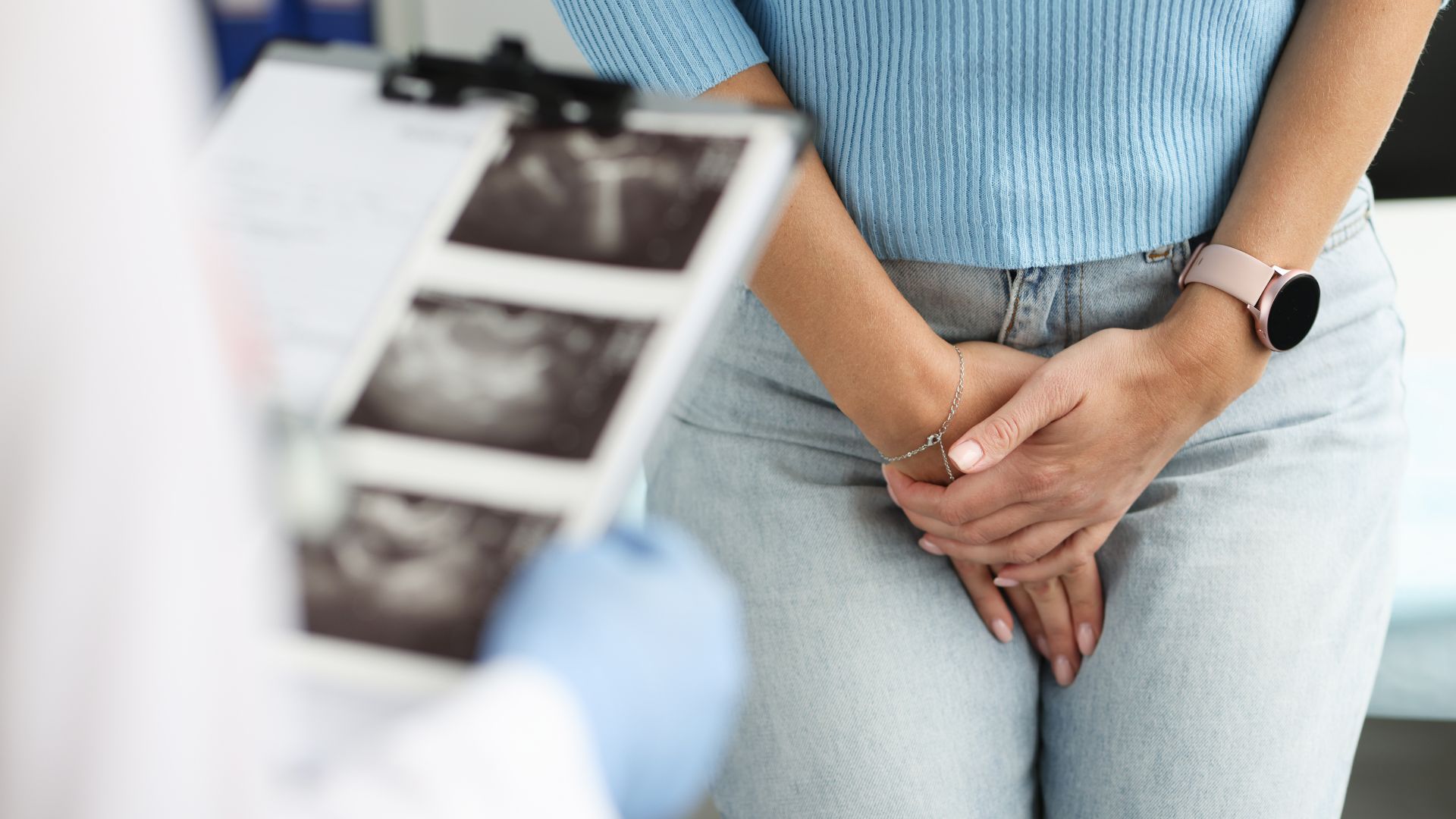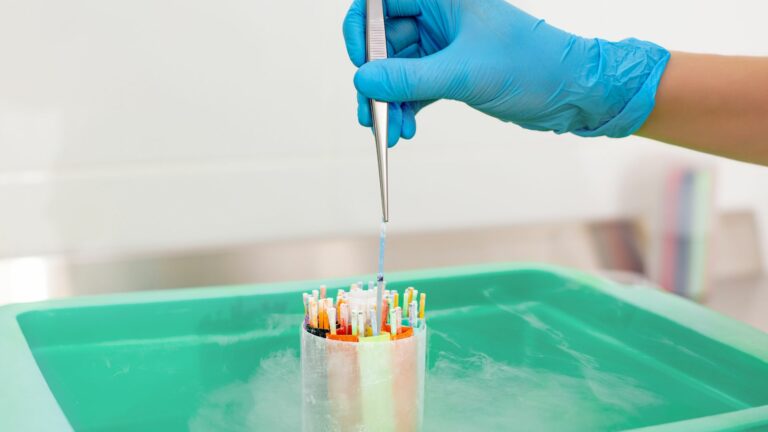
In Vitro Fertilization (IVF) represents a beacon of hope for countless couples facing infertility across the globe, including in India.
This advanced reproductive technology involves the fertilization of an egg outside the body, with the embryo subsequently transferred to the uterus, offering the chance for pregnancy to couples who have faced challenges in conceiving naturally.
A key factor that may complicate this process is the presence of a uterine septum, a congenital anomaly where a wall of tissue divides the uterine cavity partially or completely.
This condition can significantly influence both the ability to conceive and the success of pregnancy because it may impact the implantation of the embryo or increase the risk of miscarriage.
Understanding the nuances of how a uterine septum can affect IVF outcomes is crucial for prospective parents contemplating or undergoing IVF treatments.
Additionally, recognizing the surgical options and the potential improvement in success rates following correction of this anomaly can empower couples with the knowledge to make informed decisions regarding their fertility treatments.
Key Takeaways
| Aspect | Detail |
|---|---|
| IVF Overview | Fertilization of an egg outside the body with subsequent embryo transfer |
| Uterine Septum Definition | A congenital wall dividing the uterine cavity, impacting fertility and pregnancy |
| Impact on IVF | Can reduce implantation chances and increase miscarriage risk |
| Correction Benefits | Surgical removal may improve IVF success rates |
With increasing IVF success chances, understanding and addressing all potential obstacles, including structural issues like a uterine septum, becomes imperative.
Couples facing recurrent IVF failure or dealing with unexplained infertility often explore a variety of diagnostic measures, such as the assessment of potential uterine anomalies, to enhance their probability of success.
For older couples, who often face additional challenges due to advanced maternal age, ensuring an optimal uterine environment is especially critical.
Understanding Uterine Septum
A uterine septum might not only make it difficult to conceive but also predispose to a higher risk of pregnancy loss even after conception has occurred.
From reducing the available space for implantation to providing a suboptimal environment due to poor vascular supply, the implications of this condition are profound.
For those considering IVF, detailed diagnostics to confirm or rule out the presence of a uterine septum should be a preliminary step.
Options like sonohysterography or hysteroscopy are commonly employed techniques to visualize the uterine interior comprehensively.
Women who are found to have a septum then face decisions about pre-IVF surgical correction which could potentially increase the success rate of IVF significantly.
The availability of choosing the best IVF clinic, particularly those equipped to handle complex fertility issues, is essential in managing conditions like uterine septum effectively.
Clinics in Ludhiana, Agra, Nashik, Faridabad, and Meerut offer tailored fertility solutions, enhancing access to specialized care.
Moreover, the cost of IVF, potentially compounded by the need for surgical interventions like hysteroscopic septum resection, necessitates a solid understanding of financial planning in IVF cost discussion.
Insurance coverage in India for infertility treatments can vary significantly, and understanding these aspects upfront can help manage expectations and financial planning more effectively.
Impact of Uterine Septum on IVF Pregnancy Rates in India
When considering IVF, the structure of the uterus plays a critical role in the success of implantation and the continuation of a healthy pregnancy.
The presence of a uterine septum is a notable concern because it creates an environment that can be less than ideal for embryo development.
Understanding the Risks
The fundamental issues caused by a uterine septum during an IVF cycle include:
Reduced Implantation Space: The septum can effectively diminish the space available for the embryo to implant within the uterine lining. Given that the placement of the embryo can significantly impact its chances of survival, a restricted space complicates the implantation process significantly.
Poor Blood Supply: If an embryo implants on the septum, it may suffer from inadequate access to blood supply. Proper blood flow is essential for the embryo’s development, and a lack of nutrients can lead to developmental issues or miscarriage.
Increased Risk of Miscarriage: Even when an embryo implants successfully in a suitable area of the uterus, the structural integrity provided by the septum can still be precarious.
Miscarriage rates in pregnancies where a uterine septum is present are statistically higher, making it a critical factor to address before proceeding with IVF.
Diagnostic Steps
To assess the presence and extent of a uterine septum, the following diagnostic tests can be utilized:
- Ultrasound: A preliminary tool that can suggest the presence of a septum.
- Sonohysterography: This involves the infusion of saline into the uterus during ultrasound imaging to provide a clearer view of the uterine cavity.
- Hysteroscopy: The definitive method for diagnosing a uterine septum, wherein a small camera enters the uterine cavity, offering a direct view and the option for surgical intervention.
Women who undergo these diagnostic tests and are found to have a septum often benefit from consulting their fertility specialist about the potential for surgical correction before commencing IVF.
This step is crucial, especially for those who have experienced recurrent IVF failure or unexplained infertility.
Actionable Steps
- Consult a Fertility Specialist: Essential for confirming any diagnosis and discussing possible impacts on fertility.
- Educate Yourself: Understanding your condition empowers you to make informed decisions about your treatment—read more about what to expect during IVF.
- Surgical Consideration: Discussing the potential for hysteroscopic septum resection with your doctor could improve outcomes.
What to Remember
Successful IVF involves numerous complex factors, but having a structurally sound uterus is one of the foundational elements.
Addressing and correcting a uterine septum can significantly enhance the effectiveness of IVF, reduce the risk of miscarriage, and pave the way for a smoother pregnancy.
Surgical Correction of Uterine Septum for Improved IVF Outcomes in India
The decision to correct a uterine septum through surgical means is pivotal, particularly for individuals preparing for IVF.
The primary surgery used for this correction is hysteroscopic septum resection, which is a minimally invasive procedure known to enhance fertility outcomes significantly.
Hysteroscopic Septum Resection: A Minimally Invasive Option
What is Hysteroscopic Septum Resection?
Hysteroscopic septum resection involves the removal of the septal tissue through a hysteroscope, a specialized instrument inserted through the cervix.
This procedure allows the surgeon to directly view and operate inside the uterus without the need for external incisions.
Benefits for IVF:
- Increased Implantation Rates: By restoring the normal uterine cavity, the embryo has a greater surface area to attach, which can significantly improve the likelihood of successful implantation.
- Reduced Risk of Miscarriage: Removing the septum decreases the chance of miscarriage, as the problems associated with poor vascular supply and structural integrity are addressed.
- Higher Overall IVF Success: Numerous studies have demonstrated that patients undergoing this procedure have higher overall IVF success rates, including higher live birth rates.
The Procedure Explained
- Diagnosis Confirmed: A final assessment via hysteroscopy confirms the presence and size of the septum.
- Surgical Planning: The surgeon discusses the procedure, outlining the expected outcomes and possible risks.
- Day of Surgery: The procedure is typically done on an outpatient basis under general anesthesia or sedation.
- Recovery: Recovery times are generally short, with most women returning to normal activities within a few days.
- Post-Surgical Follow-Up: Follow-up visits ensure the uterus is healing correctly and assess readiness for IVF.
Considerations and Risks
Like any surgical procedure, hysteroscopic septum resection carries potential risks, although these are rare:
- Infection
- Bleeding
- Potential Damage to the Uterine Wall
Discussing these risks with a healthcare provider will help in making an informed decision. It’s essential to choose a qualified and experienced IVF center, as the expertise of the surgeon plays a critical role in minimizing risks and ensuring successful outcomes.
Actionable Steps
- Discuss with Your Fertility Specialist: Understanding the benefits and risks of hysteroscopic septum resection can help decide if it’s right for your situation.
- Consider Your IVF Timeline: Scheduling the surgery can affect your IVF timeline, so planning accordingly is essential.
- Recovery and Preparation for IVF: Use the recovery period to prepare physically and emotionally for the upcoming IVF cycle.
What to Remember
Undergoing surgical correction for a uterine septum can be a significant but beneficial decision for many women facing IVF.
It not only enhances the chances of a successful pregnancy but also mitigates risks associated with the septum.
With the guidance of a skilled team at a reputed IVF center, many women find this an empowering step towards achieving their dream of parenthood.
IVF Success Rates After Uterine Septum Correction in India
Addressing a uterine septum through surgical intervention significantly enhances the likelihood of a successful pregnancy via IVF.
This section explores how uterine septum correction influences IVF success rates based on recent studies and statistical data.
Improvement in IVF Outcomes
The impact of hysteroscopic septum resection on IVF success rates is profound and encouraging:
- Increased Implantation Rates: Post-surgery, the normalized shape of the uterus allows for better implantation conditions, thereby increasing the success rates of embryo transfer.
- Higher Live Birth Rates: Women with corrected uterine septa show a substantial increase in live birth rates compared to those who do not undergo the procedure. This is likely due to a more favourable uterine environment and reduced complications during pregnancy.
- Decreased Miscarriage Rates: The correction of the septum decreases the structural challenges that contribute to miscarriage, resulting in fewer pregnancy losses post-IVF.
Statistical Analysis and Research
Several studies underscore the benefits of septum correction:
- A comprehensive review noted that patients with a previously diagnosed uterine septum who underwent septum resection saw a 60% improved outcome in subsequent IVF cycles.
- Research indicates that the miscarriage rate, which could be as high as 40% in women with untreated uterine septa, drops significantly after surgical intervention.
These statistics suggest not only an increase in the potential for achieving pregnancy but also a greater probability of sustaining it to term.
Tailoring IVF Protocols Post-Surgery
After undergoing hysteroscopic septum resection, the IVF protocol might need adjustment to optimize outcomes.
This involves:
- Enhanced Monitoring: Closer monitoring in the initial weeks post-transfer to ensure optimal embryo development.
- Adjusted Medication Regimens: Alterations in hormonal treatments to support the newly corrected uterine environment.
- Personalized Follow-Up Care: Tailored follow-up strategies to maximize the health of the pregnancy.
Exploring IVF Success Rate Data
For those interested in the numerical impact of such surgeries, exploring resources like the IVF success rate page can provide more detailed insight into how corrective surgeries improve outcomes across various demographics.
Considerations for Future Treatment Cycles
Patients considering multiple IVF cycles should discuss the long-term impacts of septum resection with their fertility specialist, including potential impacts on future fertility treatments.
Actionable Steps
- Review Historical Data: Understand your clinic’s success rates post-septum correction by reviewing their historical data and outcomes.
- Engage in Informed Discussions: Have detailed discussions with your IVF specialist about how septum resection could change your treatment plan.
- Prepare for IVF Post-Correction: Mentally and physically prepare for an IVF cycle post-surgery, acknowledging the improved odds but maintaining realistic expectations.
What to Remember
Uterine septum correction dramatically shifts the landscape of IVF success. By addressing structural impediments, couples may see substantial improvements in pregnancy rates.
Comprehensive pre-surgical evaluation and post-surgical care are pivotal in leveraging these improved odds towards achieving successful pregnancy outcomes.
Additional Considerations for Indian Patients Undergoing IVF with Uterine Septum
Navigating IVF with the added complexity of a uterine septum requires thoughtful consideration of various factors, especially within the Indian context.
This section outlines additional aspects such as financial planning, finding the right healthcare provider, and accessing emotional and community support.
Financial Aspects and Insurance Coverage
Cost Considerations:
IVF and associated treatments such as hysteroscopic septum resection can be expensive.
The costs can vary significantly based on the clinic, the city, and the specific treatments required. For detailed information, visiting pages like IVF cost in India can be helpful.
Insurance Coverage:
- Health insurance coverage for IVF and related procedures varies widely among providers in India. Some insurers may cover the diagnostic procedures but not the IVF treatments themselves.
- It is essential to thoroughly review your health insurance policy to understand what aspects of the treatment are covered and to plan financially for the components that are not.
Financial Planning:
- Many couples find it useful to consult financial advisors who are familiar with healthcare costs.
- Some clinics offer financing plans or payment schemes that can ease the burden, making it essential to inquire about these options during your initial consultations.
Finding the Right Fertility Specialist
Choosing a fertility specialist who is not only skilled but also familiar with treating patients with uterine anomalies can make a significant difference in the outcome:
- Qualifications and Experience: Look for specialists who are well-qualified and have extensive experience with IVF and hysteroscopic surgeries. The Indian Society of Assisted Reproduction offers a directory of clinics and specialists.
- Success Rates: Inquiring about the success rates of treatments, especially for patients with uterine septum, can provide insights into the effectiveness of the clinic’s procedures.
- Patient Reviews: Hearing from other patients who have undergone similar treatments can provide a more personal perspective on what to expect.
Emotional Support and Community
IVF can be an emotionally demanding process, and the presence of a uterine septum may add to the stress.
- Support Groups: Joining IVF support groups in India can offer emotional support and valuable advice from those who are undergoing or have gone through similar experiences.
- Counseling Services: Some IVF clinics offer counseling services to help cope with the emotional aspects of infertility treatments. Taking advantage of these services can be beneficial.
- Family and Friends: Keeping close contacts informed about your journey can also provide an essential support network.
Actionable Steps
- Evaluate Financial Options: Assess all potential costs and explore insurance and financing options to prepare for the financial aspect of treatment.
- Choose the Right Specialist: Select a specialist based on their experience with uterine anomalies and IVF, and consider factors like approachability and the availability of supportive resources.
- Seek Support: Engage with support networks, both formal and informal, to help navigate the emotional landscapes of IVF.
What to Remember
While the path through IVF with a uterine septum in India involves several additional layers of complexity, it is navigable with the correct information and support.
Preparing financially, selecting the right medical professional, and utilizing available emotional support resources can significantly impact your journey’s success and overall experience.
Conclusion
Navigating the journey of IVF with a uterine septum in India involves thorough preparation, advanced surgical intervention, and robust support systems.
Awareness and addressing the uterine septum can optimize the chances of a successful pregnancy, making it crucial for hopeful parents to seek comprehensive care and consider all available support avenues.
By understanding your options and preparing adequately, you can step confidently towards achieving your dream of parenthood.
In this comprehensive guide, we’ve explored the impact of uterine septum on IVF success, the benefits of surgical intervention, and various additional considerations specific to Indian patients. We hope this information empowers you to make informed decisions on your fertility journey.






